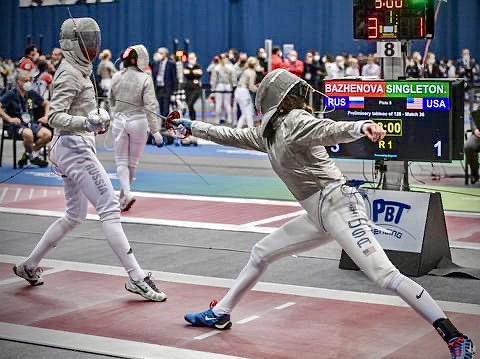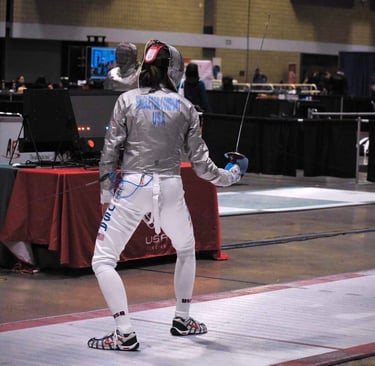The Art of Fencing: Bridging Two Worlds with Brush and Blade
Leanne Brenner
4/11/20253 min read


When I tell people I'm a fencer, I usually get a question like, "What kind? Picket or chain-link?" I laugh and roll my eyes. Yes, the dual meaning of "fencing" leaves much room for humor.
But my kind of fencing is a bit different. Since 12 years old, I found passion in the sport of saber fencing. Beneath the surface display of clashing blades and dramatic duels, it is a sport of athletic demand and strategic discipline, often being compared to a physical game of chess. It is also a subject of art.
As a former Olympic hopeful training full-time in the World Class Athlete Program (WCAP) for the U.S. Space Force and competing on the world stage for Team USA, I’ve had the unique privilege of living the sport at its most intense. Training during the pandemic was a test of resilience- isolation, limited resources, and adapting to constantly changing conditions were challenging enough, but an Achilles injury ultimately ended my Olympic journey in 2023. Unable to continue fencing, I turned to painting as a way to process and heal, but this shift also revealed fascinating parallels between the two disciplines of art and fencing.
A Duel of Mind and Body: What is Fencing?
Fencing combines strategy and athleticism, but the three weapon categories have quite drastic differences so participants typically choose only one weapon for specialization. These are the three modern fencing weapons (with video links for references), each consisting of distinct rules and techniques:
Foil: A lightweight weapon targeting only the torso. Points are scored with the tip, and "right of way" rules dictate who earns the point. (perhaps athletically compared to that of a mid-distance, relay race)
Epee: A heavier weapon where the entire body is a valid target. There are no priority rules, so the first touch wins the point or if both fencers hit, both win a point. (more similar to a long-distance jog)
Saber: My weapon, focused on using the whole blade to score using "cutting" or "slashing" motions. The target area includes everything above the waist, and points are awarded by "right of way" rules similar to foil. (comparable to short-distance sprints)
The Piste versus the Canvas
Just as fencing demands precise footwork and blade control, painting requires a steady hand and creative vision. The strokes of a brush and the arcs of a blade share a rhythm, both being expressions of intention and movement. Fencing and painting both incorporate dominant hand and wrist actions and require a degree of breath control while engaging in each activity. I also observe them both as acts of storytelling. Each fencing bout is a narrative of strategy and response, much like the layers of acrylic paint that build toward a final image. Each require perseverance, creativity, and the courage to face the unknown.
The Underdog of Artistic Representation
Fencing has a rich history as one of the oldest sports in the world, but it remains underrepresented in art compared to other sports. While historical depictions of duels exist, modern portrayals of fencing are rare. This lack of visibility mirrors the challenges our sport faces in gaining mainstream attention, especially in the United States.
Brenner Heartworks wants to change this narrative by creating works that celebrate modern fencing's elegance, drama, and complexity. Through bold colors, dynamic compositions, and intimate depictions of fencers mid-action, I aim to capture the spirit of the sport and share its beauty with a broader audience. Fencing is an incredible sport, and art form, worthy of the spotlight it so often misses. And I challenge you to pick up a blade, or a brush, and remember: both can lead you to create something extraordinary.










© 2025, Brenner Heartworks · All rights reserved · Shipping and Refund Policies · Terms of Service
Questions?
